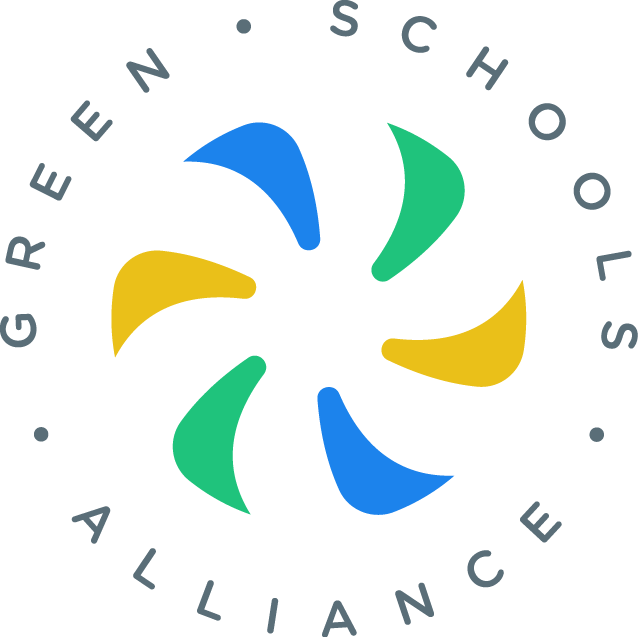
Educational Programs
Teaching Sustainability
START Metric #8:
Sustainability Learning Outcomes
Ideas & Resources

Sustainability Learning Outcomes ensure that students develop the knowledge, skills, and values necessary to address environmental, social, and economic challenges. This START metric emphasizes formally or informally assessing students to determine whether they have achieved predetermined sustainability-related learning outcomes in at least two school subjects each year. These outcomes can be tailored to align with existing curriculum goals while fostering critical thinking, problem-solving, and collaboration skills through a sustainability lens.
By embedding sustainability learning into academic subjects, schools empower students to become informed and engaged citizens who are equipped to contribute to a sustainable and regenerative future.

Strategies for Implementing Sustainability Learning Outcomes
NOTE: This is not a prescriptive list; it just offers ideas to inspire action and can be tailored to fit the unique needs of each school.
Define Clear Learning Outcomes
Identify specific sustainability-related skills or knowledge students should acquire, such as understanding interconnected ecosystems, renewable energy, or resource use.
Align learning outcomes with broader curriculum standards and sustainability goals.
Integrate Sustainability into Existing Subjects
Use real-world sustainability issues, such as biodiversity loss or waste management, to enhance relevance.
Use Interdisciplinary Approaches
Develop projects or activities that connect sustainability concepts across multiple subjects. For example, combine science and art to create infographics on water conservation or use math and economics to analyze renewable energy costs.
Incorporate Hands-On Learning
Use experiential activities like building a composting system, conducting energy audits, or designing green spaces. These activities help students apply theoretical knowledge to practical problems.
Create Rubrics for Assessment
Develop clear criteria for assessing sustainability learning outcomes, such as problem-solving ability, critical thinking, innovation, or collaboration skills.
Use rubrics to ensure consistent and transparent evaluation.
Use Project-Based Assessments
Assign projects that require students to solve sustainability-related challenges, such as designing a zero-waste lunch plan or mapping local biodiversity.
Evaluate projects based on creativity, feasibility, and alignment with sustainability principles.
Host Reflection Sessions
Encourage students to reflect on their learning through journals, group discussions, or presentations.
Leverage Technology for Learning and Assessment
Use digital tools like simulations, apps, or online quizzes to teach and assess sustainability concepts.
Collaborate with Subject Teachers
Work with teachers to embed sustainability outcomes into their lesson plans and assessment.
Engage Students in Co-Creation
Involve students in defining sustainability learning outcomes or designing assessments.
Use their input to ensure that goals are relevant and engaging.
Link Outcomes to Real-World Challenges
Focus on outcomes that address pressing issues, such as climate resilience, biodiversity loss, community wellbeing, or resource conservation.
Use case studies, news articles, or local problems to contextualize learning.
Incorporate Peer and Self-Assessment
Allow students to evaluate their own or their peers’ understanding of sustainability concepts.
Recognize Achievement
Celebrate students who excel in sustainability learning through awards, certificates, or showcases.
Use recognition to motivate further engagement and build a culture of sustainability.
Use Fieldwork and Community Projects
Assess outcomes through participation in community initiatives, such as cleanups, awareness campaigns, or citizen science projects.
These projects provide opportunities for real-world application and impact.
Continuously Review and Improve Outcomes
Use feedback from assessments to refine learning outcomes and instructional strategies.
Adjust goals annually to address emerging sustainability issues and trends.
Additional Resources
-

Integrating Sustainability Across the Curriculum
From Creative Change Educational Solutions, an overview of sustainability curriculum integration, disciplinary connections and rubrics to assess effectiveness of integration.
-
-
Schools hold the key to a healthy, sustainable and regenerative future.
Education equips learners with the knowledge, skills, and mindset to understand and respond to today’s environmental challenges and their impacts, and to help restore and regenerate the natural systems we depend on.
Schools can prepare students to think critically, act creatively, and contribute to a future where communities and ecosystems can thrive—now and for generations to come.
But how do we get there?

START: Sustainability Tracking, Analytics & Roadmap Tool was created by schools, for schools, to help them develop comprehensive programs for step-by-step progress towards sustainability, regenerative practice, and student empowerment.
START provides a Roadmap for School Sustainability:
It breaks down school sustainability into clear actions (‘metrics’), such as Minimizing Waste, Reducing Greenhouse Gas Emissions, and supporting Sustainable Transportation options.
However, research shows it’s not enough for a school to simply reduce its environmental impact in its Physical Place (buildings & grounds).
Students and staff also need to learn about sustainability (Educational Programs), and practice it in day-to-day activities (Organizational Culture), because hands-on involvement fosters lasting habits and a deeper understanding of our shared responsibility for environmental stewardship.
How sustainable is our school now?
Schools use START to measure how sustainable they are now. A school’s START team investigates how their school currently operates to find their ‘sustainability baseline’ for each metric. For example, is our school a beginner, intermediate or advanced in sustainable water use? START enables schools to benchmark, track and visualize their current sustainability levels, as well as hard data around their waste, water, energy and greenhouse gas emissions.
Where should we go next, and do we collaborate for success?
What do we need to do to ‘level up’ in each metric? Once schools have their baselines, START helps them to set goals and plan for progress. START provides a central hub for school members to collaborate, document, and plan their school’s sustainability journey.

START is a subscription-based Whole School Sustainability dashboard.
It requires at least one adult school member to create a school’s START account, but it will need a team (students, teachers and staff) to grow a Whole School Sustainability program.
Interested schools can sign up for a demo or apply to set up an account.
Learn more about START here, and consider sharing the brochure with your school.
Let’s create a better future, one school at a time.
Contact us at guides@greenschoolsalliance.org if you have a free resource to contribute or recommend that can help schools take action around this specific sustainability metric.






